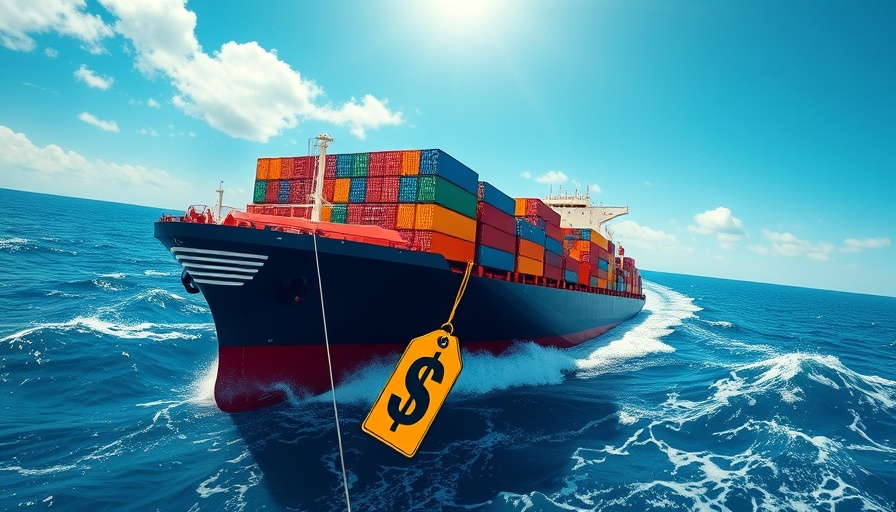
Assessing the Impact of Tariffs on Everyday Products
The economic landscape is continuously shaped by various factors, including government policies like tariffs. When tariffs are implemented, they affect not just international trade but also the prices consumers pay for everyday goods. Understanding the direct link between tariffs and pricing can empower consumers to make informed decisions about their purchases.
What Products Are Likely to Experience Price Increases?
As tariffs on imports rise, several sectors will likely see a notable increase in product prices. These include technology gadgets, automotive parts, appliances, and even foods that are imported. For instance, the ongoing trade tensions have led to higher costs for electronics, especially smartphones and laptops, that are often assembled overseas. The increased cost of components can trickle down to consumers, making budgeting for technology a challenging endeavor.
The Ripple Effect of Tariffs
Tariffs do not solely impact the products directly subjected to them, as the ripple effects are felt throughout the supply chain. For example, increased tariffs on steel can elevate prices for numerous manufactured goods. Construction materials, home appliances, and even furniture may see a cost increase as manufacturers pass on rising costs to consumers. Those in the business sector need to anticipate these price shifts when outlining budgets or planning new projects.
Real-life Implications: How Consumers Can Prepare
Awareness of potential price increases allows consumers to adjust their purchasing strategies. For instance, buying certain goods before an announced tariff takes effect could save money in the long run. Additionally, shopping local, where possible, can help alleviate some price pressures. Given the increase in online shopping, checking the source of products and being mindful of imports can also inform purchasing decisions.
Future Predictions: Staying Ahead of Price Trends
As global markets evolve, analysts suggest that consumer goods pricing will remain volatile due to tariff policies. Future predictions indicate that the most significant increases may occur within categories heavily reliant on international supply chains. It's advisable for consumers to stay informed about political changes that could impact tariffs, as these will likely dictate price increases in numerous sectors.
Understanding Tariffs: A Consumer’s Guide
Many consumers remain unaware or misinformed about how tariffs function. Essentially, tariffs are taxes on imported goods, designed to protect domestic industries by making foreign products more expensive. However, this protective measure can backfire, resulting in higher prices for consumers and spurring inflation. Economists stress the importance of understanding this relationship to navigate personal finance smartly.
Collaborating for Solutions: Community Responses to Tariffs
Community engagement and discussions around tariffs are essential for grassroots awareness and response. Local businesses and organizations can band together to share insights and strategies for mitigating the impact of these economic shifts. Collaboration fosters a resilient economic environment where businesses and consumers support one another in navigating challenges.
Final Thoughts: Empowering Decision-Making Amidst Tariffs
In a world where tariffs will remain a key player in economic discussions, it is vital to stay informed and adaptable. Recognizing how they affect pricing can enhance your financial decision-making, allowing for better budgeting and savings plans. Make use of local resources, engage in community discussions, and always keep abreast of market trends in order to thrive financially.
Now that you know how tariffs might impact the products you buy, become proactive in your consumer choices. Knowledge is power—empower yourself to adjust budgeting strategies ahead of potential price inclines.
 Add Row
Add Row  Add
Add 




 Add Row
Add Row  Add
Add 








Write A Comment